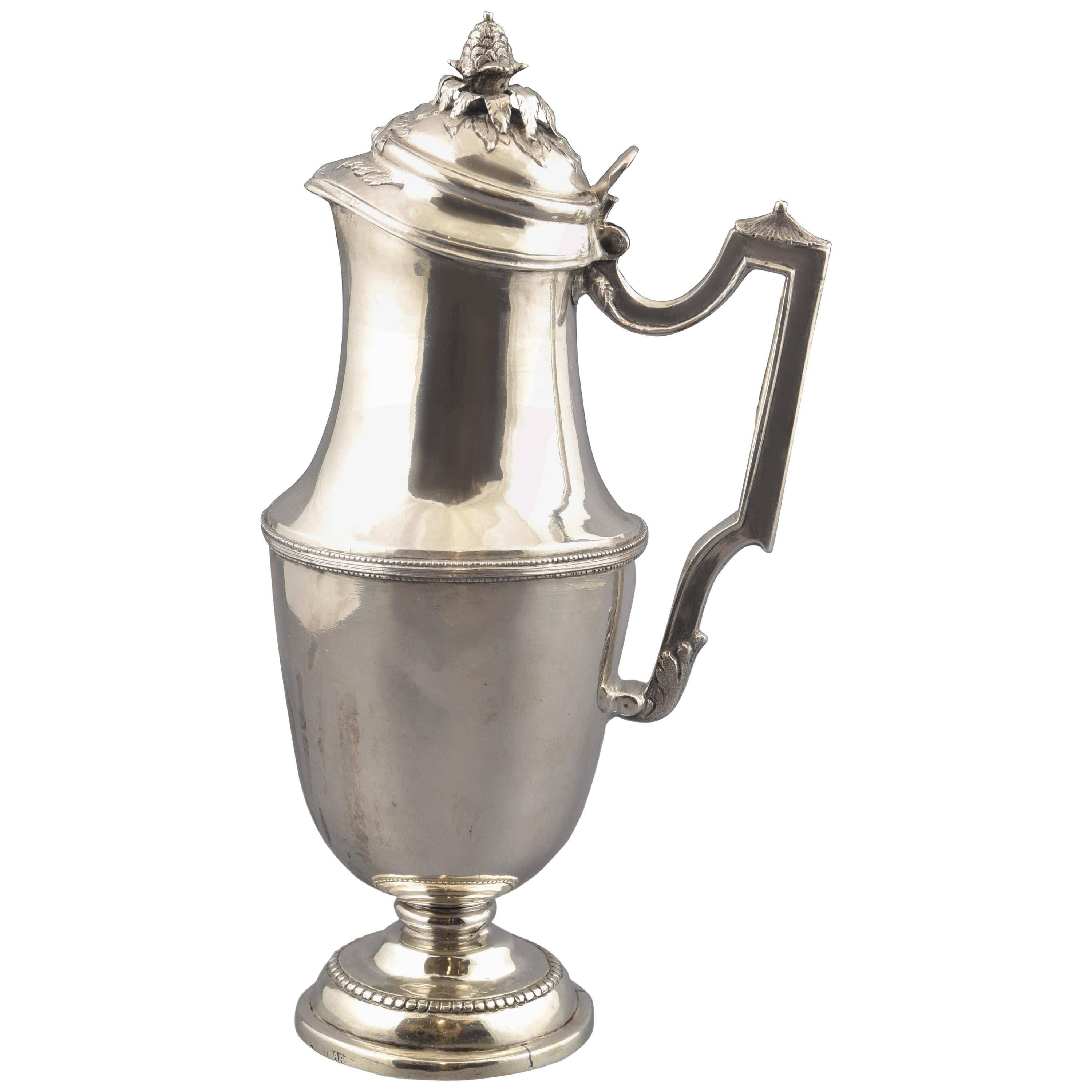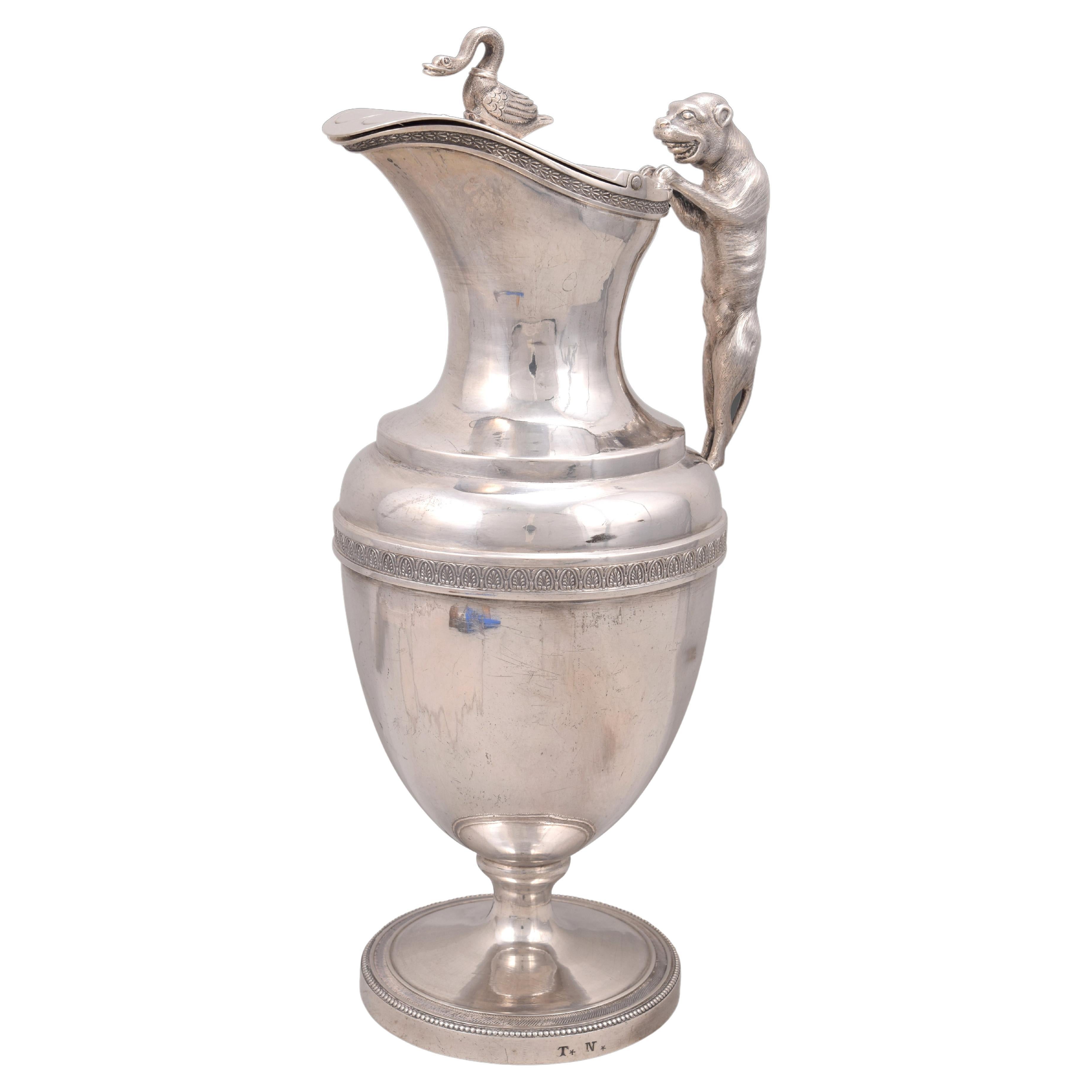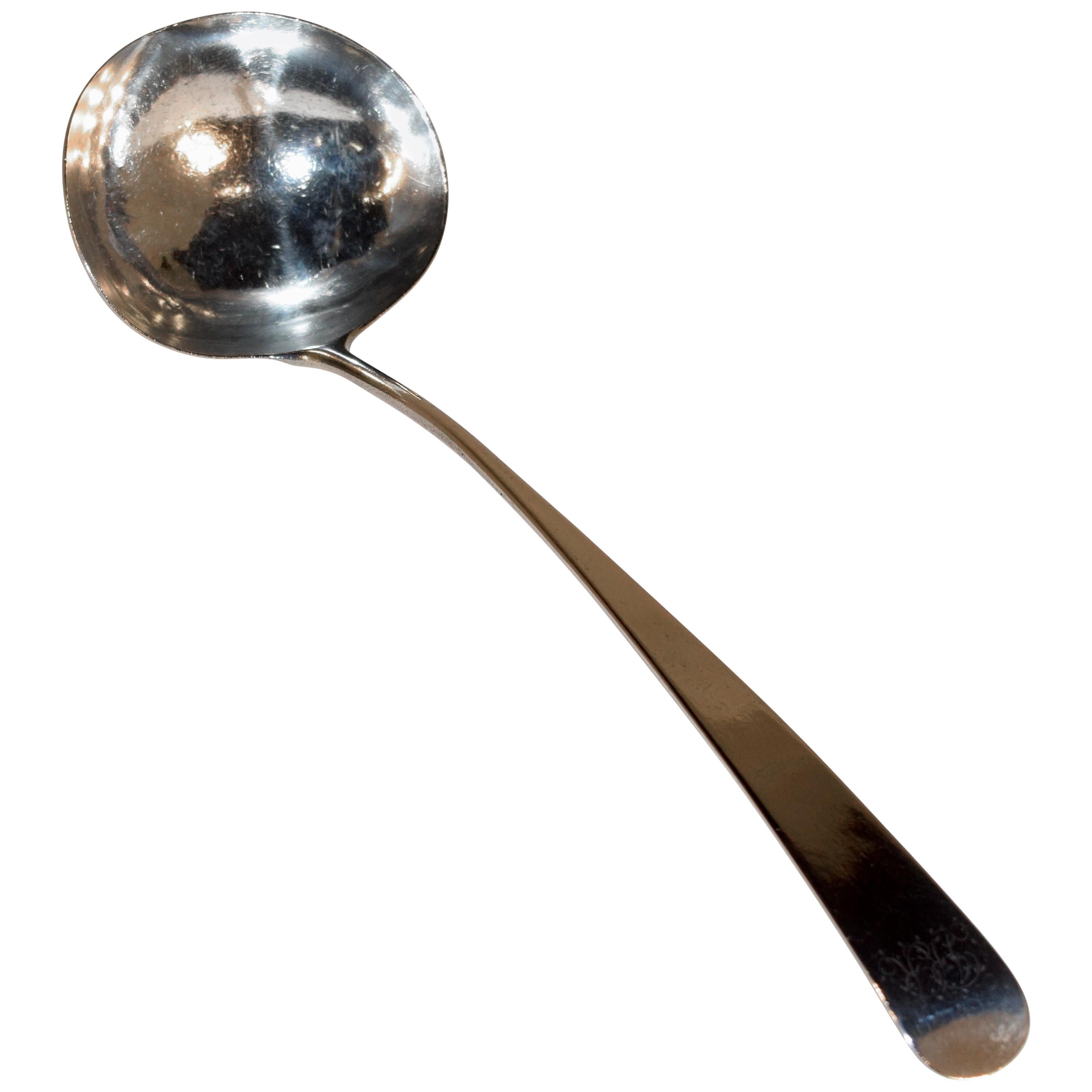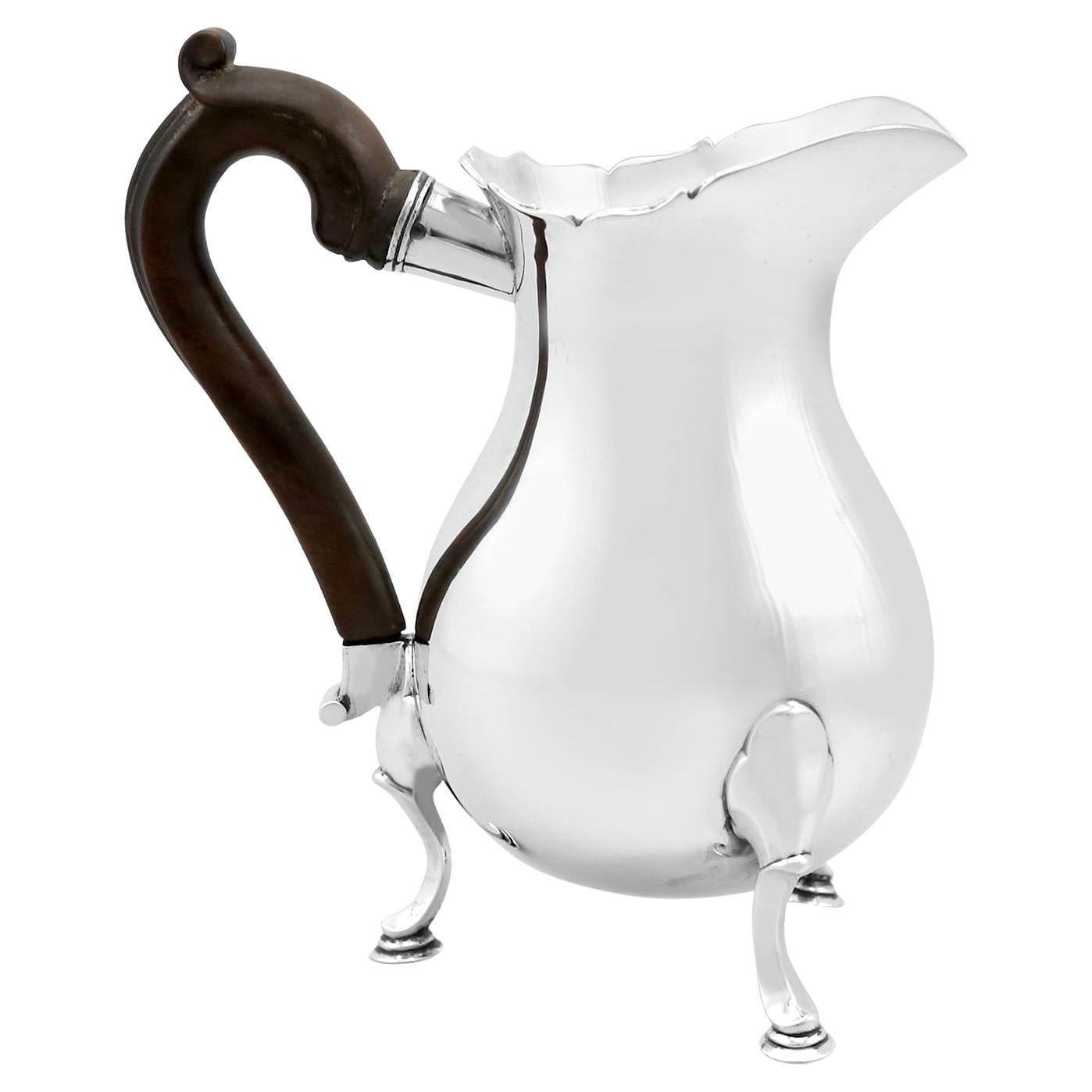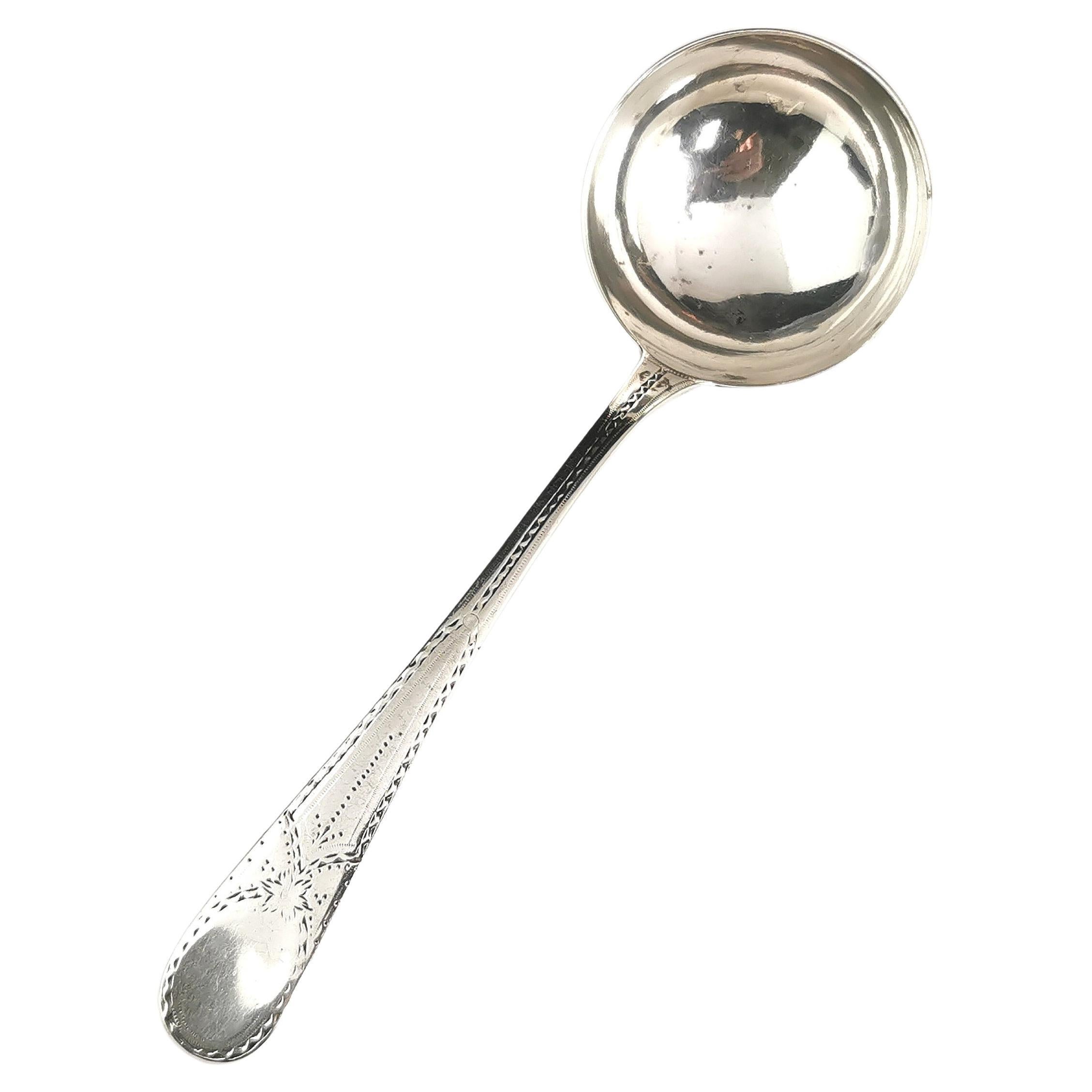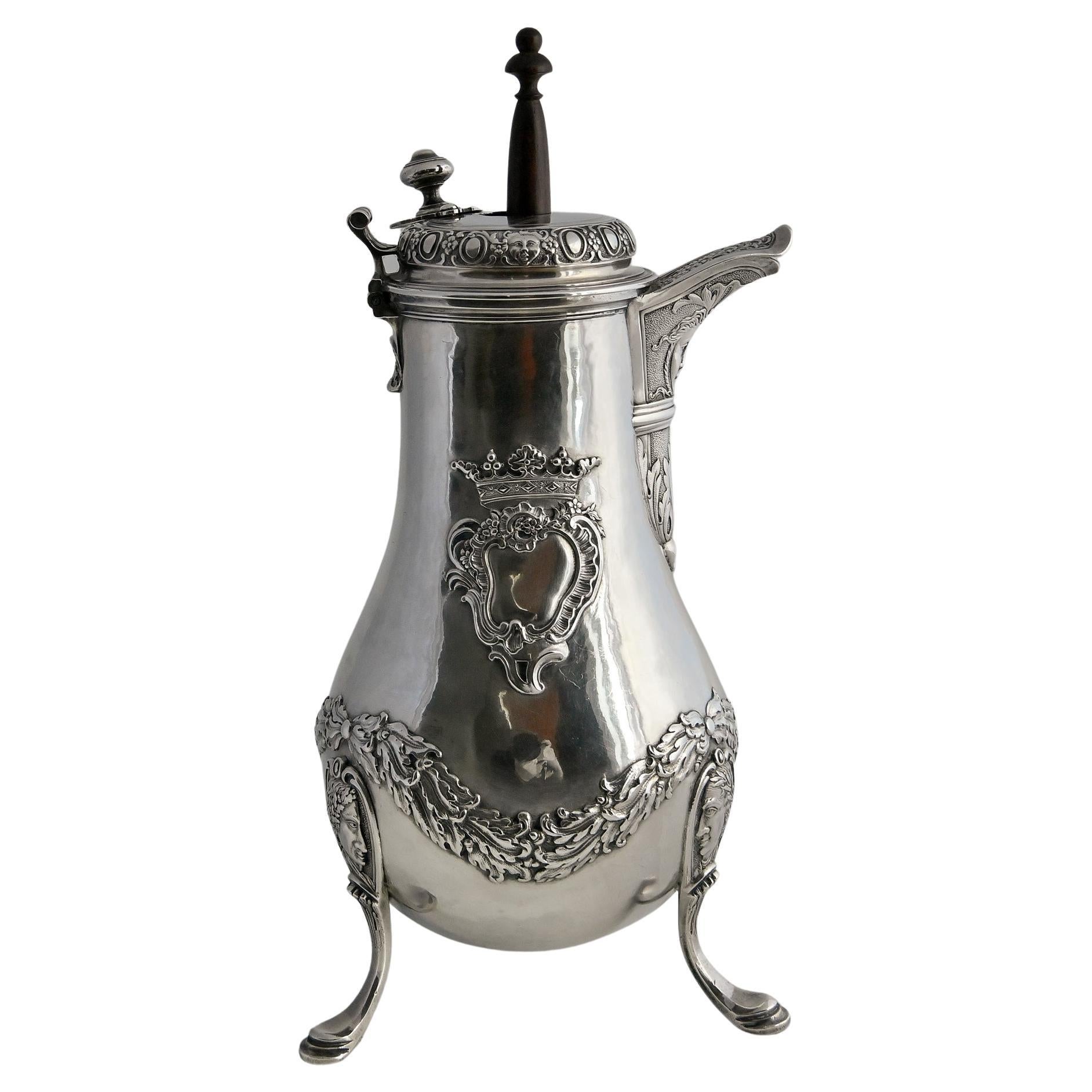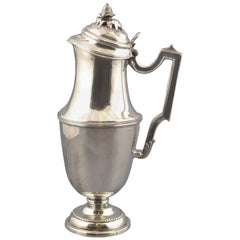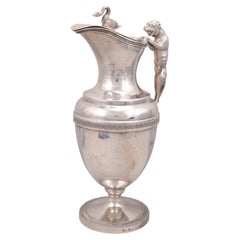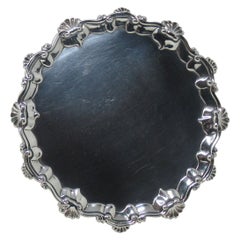
Silver Tray. Blas De Amate, Seville, Spain, Mid-18th Century, with Hallmarks
View Similar Items
Want more images or videos?
Request additional images or videos from the seller
1 of 6
Silver Tray. Blas De Amate, Seville, Spain, Mid-18th Century, with Hallmarks
About the Item
- Creator:Blas de Amate (Artist)
- Dimensions:Height: 2.37 in (6 cm)Width: 16.93 in (43 cm)Depth: 16.93 in (43 cm)
- Style:Neoclassical (Of the Period)
- Materials and Techniques:
- Place of Origin:
- Period:
- Date of Manufacture:Mid-18th Century
- Condition:Wear consistent with age and use. Minor losses. Minor fading.
- Seller Location:Madrid, ES
- Reference Number:Seller: Z64781stDibs: LU2951313026502
About the Seller
4.9
Vetted Seller
These experienced sellers undergo a comprehensive evaluation by our team of in-house experts.
Established in 1985
1stDibs seller since 2017
292 sales on 1stDibs
Typical response time: 16 hours
More From This SellerView All
- Silver Jug with Illegible Hallmarks, 18th CenturyLocated in Madrid, ESJug with lid and silver handle in its color that has a circular foot decorated and raised with a series of moldings and a band of pearls, from which part a small foot that gives way ...Category
Antique 18th Century European Rococo Serving Pieces
MaterialsSilver
- Silver Jar or Jug, De San Faurí, Juan, Spain, Madrid, 18th CenturyBy Spanish ManufactoryLocated in Madrid, ESJug or jug. Silver. DE SAN FAURÍ, Juan (1745-1785). Spain, Madrid, towards the last third of the 18th century. With contrast and burilada marks, and property name (Ochoa). The jug has an oval base with slight curves and a body divided into two areas (wider in the lower half, slightly concave in the upper half) with a series of curved “gajos”; the peak shows simple architectural decoration and smooth areas; the handle is of a type known as brace, with classicist architectural elements; the lid follows the lines of the body and is finished off with a vegetable shape creating a knob. On one of the sides, towards the foot, there is the engraved text "Ochoa", referring to a former owner. Contrasting marks place the creation of the piece in Madrid. Another one that appears could be one of those used by the silversmith Juan de San Faurí. With Felipe V, numerous French influences, along with some Italian ones, came to silverware, both from the hand of craftsmen of these origins and from pieces. Little marking continues in the works, except in important centers such as Madrid, and civil typologies acquired great importance. As in the rest of the country, the Baroque, Rococo and Neoclassical tendencies coexisted at the Court, although, being the center that set the standard for the rest, the former soon departed, introducing Rococo before 1740 or on that date, and Neoclassicism around 1770 (gradually imposing itself from 1780). The jug follows the most common prototype since the arrival of the Bourbons, characterized by its European influence and the great difference it shows with the type known as the “spout jug”. Compare with the Francisco García...Category
Antique Late 18th Century Spanish Neoclassical Serving Pieces
MaterialsSilver
- Jug. Silver. Vitoria, 18th-19th CenturiesLocated in Madrid, ESJug. Silver. Vitoria, 18th-19th centuries. With contrasting and burilated marks, and property initials (TN). Published in Encyclopedia of Spanish and Viceregal American Silver. Bibliography: Fernández, Alejandro; Munoa, Raphael; Rabasco, Jorge. "Encyclopedia of Spanish and Viceregal American Silver". Second edition, corrected and enlarged. Torreangulo Graphic Art, Madrid, 1985. Page 240; page 430, image 1472. Jug or pitcher of silver in its color, with a circular foot decorated with moldings and a string of pearls, semi-ovate belly on which, by means of a band of classicist architectural motifs, a curve, a step and a high neck with a concave profile rise. The mouth, with a sinuous outline and enhanced with another band of plant elements, presents an elevation towards the spout, and covers with a cap or lid topped with a swan-shaped knob. The handle is a feline with a round shape, in an attitude of stalking towards the bird. Typologically, the piece follows neoclassical models, brought from Europe to Madrid and spread from this place. Likewise, it should be noted that the handle with a figurative element of a round shape is not entirely common, although there are known examples in private collections of jars...Category
Antique 19th Century Spanish Neoclassical Serving Pieces
MaterialsSilver
- Silver Incense Boat (Naviculae). with Hallmarks. Spain, 18th CenturyBy Juan Antonio Sanz de VelascoLocated in Madrid, ESSilver incense boat (naviculae). SANZ DE VELASCO, Juan Antonio (1720-1778). Valladolid, Spain, 18th century. With hallmarks. The hallmarks on the base place the realization of the piece in Valladolid (note that it is the one which some experts place in time until the appointment as a "fiel contraste" of Antonio González...Category
Antique 18th Century Spanish Neoclassical Religious Items
MaterialsSilver
- Silver Spices Dish or Bowl, with Hallmarks, Spain, Córdoba, 18th CenturyLocated in Madrid, ESSpice rack. Silver. DE CASTRO, Damian. SANCHEZ SOTO, Juan. Spain, Córdoba, second half of the 18th century. With contrast markings. Silver spice rack in its color with a frustoco...Category
Antique 18th Century Spanish Rococo More Dining and Entertaining
MaterialsSilver
- Silver Fruit Tray or Tray, Córdoba, Bartolomé Gálvez y Aranda, 1759-1768, SpainBy Bartolomé Gálvez y ArandaLocated in Madrid, ESSalva cordobesa in silver, 1759-1768. With brands. Córdoba, Spain. Weight: 820 g. Salva in silver Rococo style, with punches of Cordoba and the score Bartolomé Gálvez y Aranda. It has a high, stepped foot, with a circular base, adorned with incised streaks and other simple motifs of a Classic type, announcing the change of language towards Neoclassicism. However, the dish itself is still distinctly Rococo, with a profile of curved mitering that translates into edges in the eaves. Bartolomé Gálvez y Aranda was a silversmith, although he worked as a marker between 1759 and 1772, using for this work the punch that we see here: his surname in capital letters, in very trapezoidal frame and surmounted by a fleur-de-lys in three-lobed projection. To this punch Gálvez y Aranda will add since 1768 the chronological mark, so this salvo would be dated between 1759 and 1768. It is also an especially interesting piece to come from Cordoba, the main center of Spanish silverware of the Rococo period, from whose workshops came religious and profane pieces of high quality, aimed at customers not only local but throughout the Iberian Peninsula, reaching even the Canary Islands and Latin America. The great diffusion of the Cordovan silversmith will take place, in fact, in the last quarter of the 18th century, through the so-called master silversmiths. These characters acted as trade corridors, according to Pérez Grande, visiting the churches and fairs held throughout the country. The activity of these silversmiths was also favored by tax exemptions...Category
Antique Mid-18th Century Spanish Rococo Serving Pieces
MaterialsSilver
You May Also Like
- 18th Century Mahogany Strapped TrayLocated in High Point, NC18th Century mahogany tray from England. The tray is made from a single piece of mahogany and the graining is fantastic. The tray is surrou...Category
Antique 18th Century English Georgian Platters and Serveware
MaterialsBrass
- Antique Sterling Silver Georgian Serving Card Tray Eighteenth Century HallmarkLocated in Dublin, IrelandA superb Example of an early Georgian Eighteenth Century heavy gauge Sterling Silver Card Tray of outstanding quality and condition for such ...Category
Antique Mid-18th Century English Georgian Serving Pieces
MaterialsSterling Silver
- Late 18th/ Early 19th Century French Wooden Serving Tray with Rocaille HandlesLocated in Delft, NLLate 18th/ early 19th century French wooden serving tray with Rocaille handles A beautiful oval wooden tray with Rocaille handles from the late 18th century, early 19th century. The tray has been restored in the 19th century and 1 handle has new screws, the other has the antique screws...Category
Antique Late 18th Century French Serving Pieces
MaterialsWood
- 18th Century Philadelphia Sterling Silver LadleLocated in High Point, NC18th century sterling silver large ladle stamped with a bird and what appears to be a WB on the back of the handle. The mark has been attributed to William Bartram, Philadelphia, 176...Category
Antique 18th Century American American Colonial Sterling Silver
MaterialsSilver
- 18th Century Swiss Silver Cream JugLocated in Jesmond, Newcastle Upon TyneAn exceptional, fine and impressive antique Swiss silver cream jug; an addition to our 18th century silverware collection. This exceptional antique Swiss silver cream jug has a plain pear shaped form. The body of this antique silver jug is plain and unembellished with a shaped incurved upper rim. This impressive example of antique teaware...Category
Antique 1760s Swiss Serving Pieces
MaterialsSilver
- Mid 18th Century George Ill Mahogany DumbwaiterLocated in west palm beach, FLA gorgeous vintage George III style mahogany dumbwaiter with central baluster and three shelves, each with fluted piecrust edges, resting on a tripod of Queen Anne pad feet. Acquired...Category
Antique Mid-18th Century North American Regency Serving Pieces
MaterialsMahogany
Recently Viewed
View AllMore Ways To Browse
Very Large Serving Tray
International Silver Company Silverware
Seville Antique
Spanish Silverware
Antler Handle
Antique Silver Pig
Antique Glass Pig
Antique Glass Santa
Pig 18th Century
Sevilla Antique
Religious Banner
Antique Religious Banner
Antler Tray
San Lazaro
Pig Tray
Rare Sample
Serving Tray Italy
Antique Glass Serving Trays
